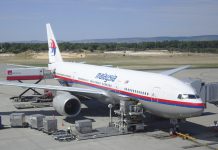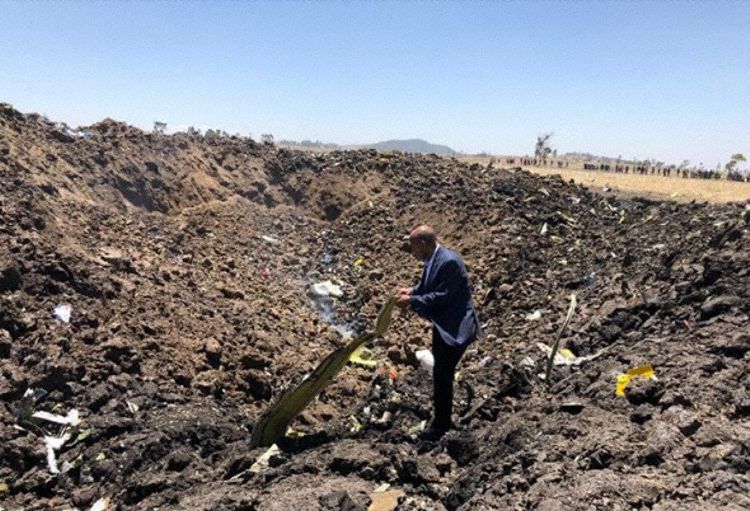An Ethiopian Airlines’ Boeing 737 MAX 8 has crashed shortly after take-off on a flight between Addis Ababa and Kenya’s capital, Nairobi, killing all 157 people on board.
Ethiopian’s group chief executive, Tewolde GebreMariam, said he had visited the site and confirmed there were no survivors.
He expressed his profound sympathy and condolences to the families of the passengers and crew “who lost their lives in this tragic accident”.
This was echoed by Ethiopian prime minister Abiy Ahmed who said: “The Office of the PM, on behalf of the Government and people of Ethiopia, would like to express its deepest condolences to the families of those that have lost their loved ones on Ethiopian Airlines Boeing 737 on a regularly scheduled flight to Nairobi, Kenya this morning.”
The airline said there were 149 passengers and eight crew members on board ET302, a Boeing 737 MAX 8.
The passengers included: 32 Kenyans, 18 Canadians, nine Ethiopians, eight Italians, eight Chinese, eight Americans, seven Britons, seven French citizens, six Egyptians, five Dutch citizens, four Indians, four Slovakians, three Austrians, three Swedes, three Russians, two Moroccans, two Spaniards, two Poles and two Israelis.
READ: 2018 safety hit masks overall improvement
The plane took off from runway 27R at Bole Airport at 8:38 am local time and contact was lost at 8:44 am.
Weather at the time was fine with a visibility of more than 10kms, with a few clouds at 2500ft, according to the Aviation Safety Network.
The Aviation Herald said the last transponder data received from the plane indicated it was flying at just over 9000ft
Flightradar 24 data shows the 737 MAX 8 was climbing normally with constant speed and altitude lines when suddenly all radar and systems contact is lost. However, it points out that its ADSB coverage is limited in the area.
The BBC reports that the pilot had reported difficulties and had asked to return to Addis Ababa.
Here is the Flightradar24 data for the first 3 minutes of the flight.

Here is the first statement from Ethiopian Airlines.

The 737 was delivered four months ago and its first flight was on October 30, 2018.
Manufacturer Boeing said it was deeply saddened to learn of the crash.
“We extend our heartfelt sympathies to the families and loved ones of the passengers and crew on board and stand ready to support the Ethiopian Airlines team,” it said.
“A Boeing technical team is prepared to provide technical assistance at the request and under the direction of the U.S. National Transportation Safety Board.”
Ethiopian has been moving in recent years to establish itself as one of Africa’s top airlines.
ASN’s accident database show its most recent fatal accident was in January 2010, when 90 people were killed when a plane crashed in the Mediterranean Sea after taking off from Beirut.
READ: Can a deal be reached to new the search for MH370?
An investigation found probably causes included the flight crew’s mismanagement of the aircraft’s altitude, speed, altitude, headings and attitude through inconsistent flight control inputs resulting in a loss of control.
The flight crew also failed to abide by crew resource management principles.
Two other fatal accidents — one in 2002 and one in 1996 — involved hijackers.
Interference from hijackers in the 1996 incident famously saw a Boeing 767 run out of fuel and 125 people die as the flight crew ditched in the sea off the Comoros Islands.
Ethiopian currently has IATA Operational Safety Audit (IOSA) certification that is due to expire in May.
In 2018, the all accident rate for airlines on the IOSA registry was more than two times lower than that of non-IOSA airlines.
























